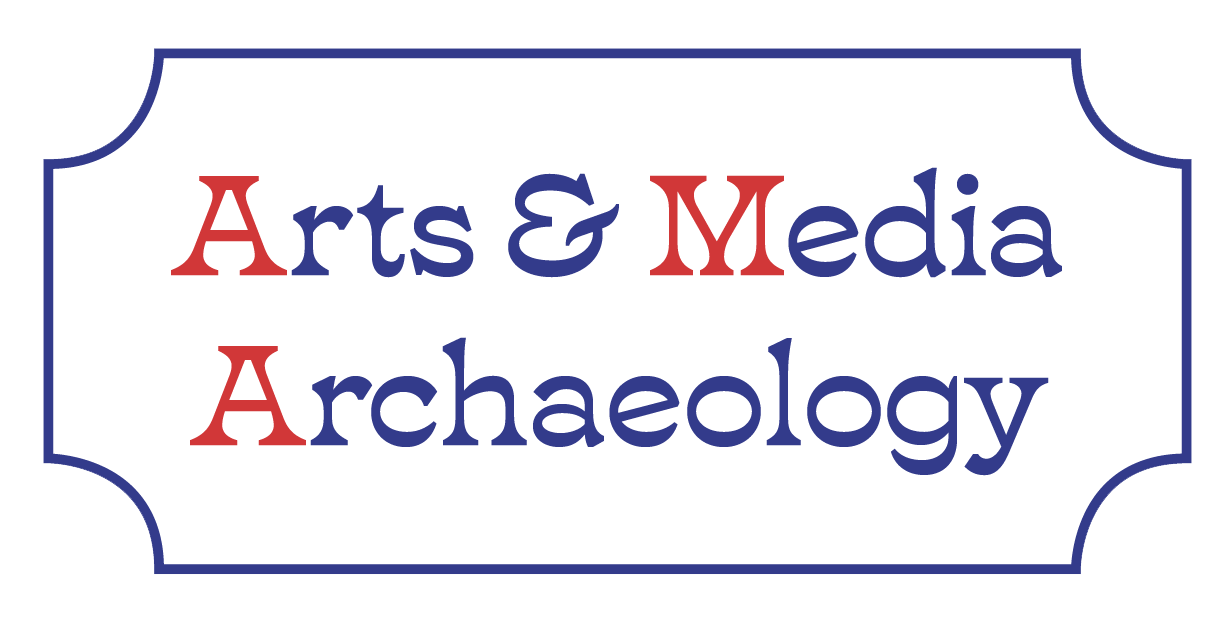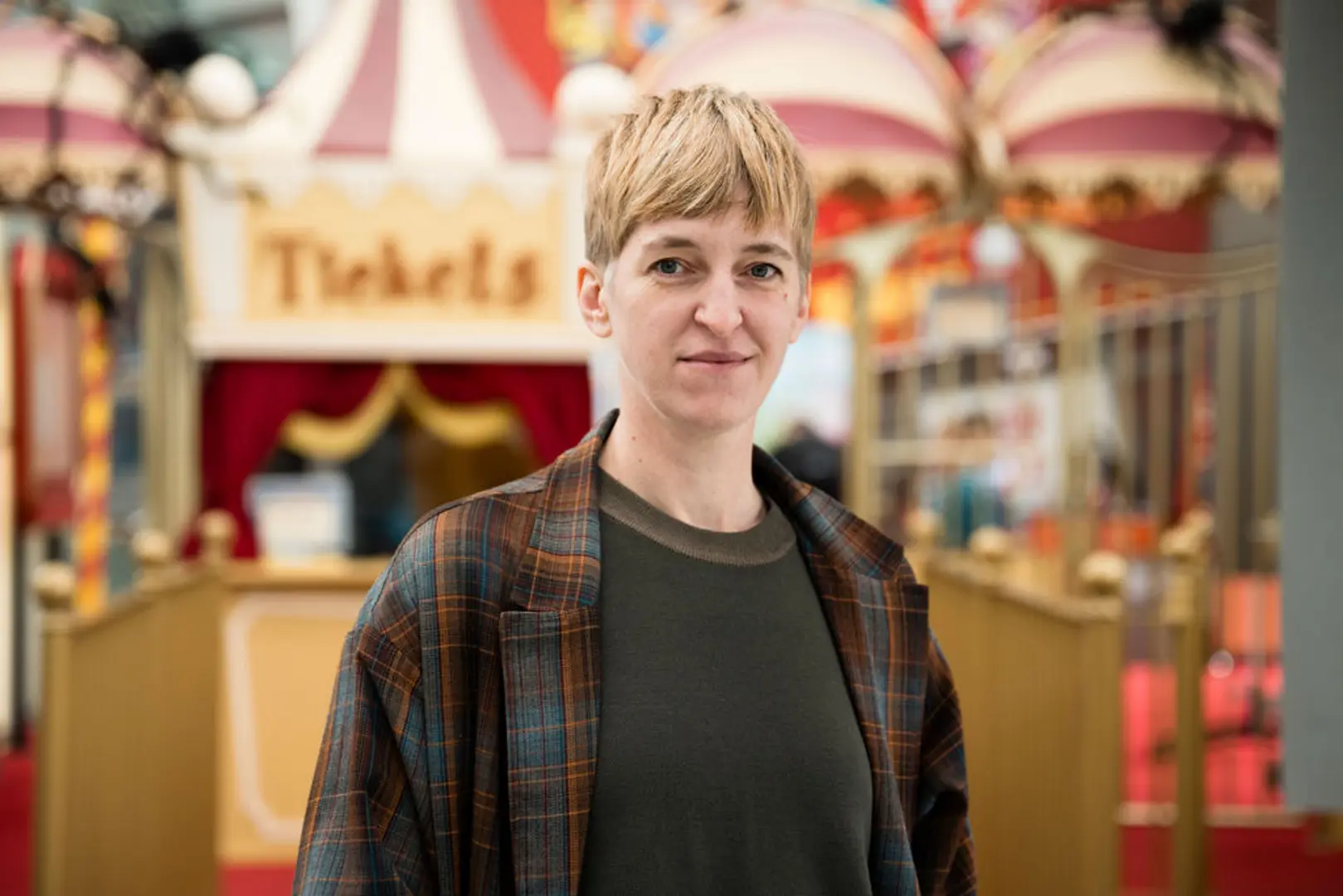This blog post originally appeared on the STROOM webpage (UAntwerp), where you can also consult the Dutch version.
Nele Wynants is a professor of art and theatre studies at UAntwerp. Her research is on the interface of science, media and performance. In her EU-funded project Science at the Fair, she explores the world of travelling science shows in the 19th century. She told us about how the project came about and made a passionate plea for more room for chance, intuition and unexpected twists in research.
Science at the fair
When we think about ‘science for the public at large’, the first thing that comes to mind nowadays is large science museums or interactive experiences such as Technopolis. In the 19th century, however, research reached the man in the street in a very different way: via travelling artists and funfair merchants.
Wynants explains: ‘They travelled around with theatre shows, museums and funfair rides revolving around science and new technology. As born entertainers, they had a nose for the spectacular. Their anatomical cabinets of wax figures and their demonstrations of such things as astronomy, electricity and x-rays were like a “popular digest” of scientific experiments and findings.’
In the nineteenth century, funfairs were important centres of international (knowledge) exchange. They were a mini version of the world exhibitions in the metropoles, where the notion of progress was celebrated with demonstrations of the latest technological developments and scientific findings. ‘Don’t underestimate the local funfairs,’ Wynants says. ‘They visited even the smallest of villages, acquainting Joe Public with the latest developments in the process.’
Meetings and finds
Inspiration for this project came from Wynants’ previous research into the interaction between art, science and entertainment. She submitted a comprehensive funding application. ‘Such an application is very systematic and result-focused,’ she says. ‘You have to list what you’re going to do for a five-year period and what results you aim to achieve. But research doesn’t work that way. Especially when it comes to historical research, you don’t know beforehand what sources you’ll find and whom you’ll cross paths with.’
There have been several occasions within Science at the Fair where the impact of chance meetings and finds on scientific studies became apparent. An unexpected meeting in Paris, for example, gave the project a new twist. Wynants stepped into a second-hand book store looking for history books about funfairs. Another customer overheard her conversation with the shopkeeper and interrupted them. It turned out he knew German funfair entertainers and put Wynants in touch with them. ‘Super valuable,’ she recalls. ‘We hadn’t found any good “ins” for Germany yet. The funfair community is rather closed. You really need someone to introduce you. And I just happened upon such a someone in that little bookshop.’
Not much later, a chance find also opened the door to Southern Europe. ‘One day, we got wind of a unique collection of anatomical wax sculptures owned by an Antwerp collector. These were exactly the type of sculptures that used to be exhibited at funfairs! They were originally collected by a Spanish family of funfair entertainers.’ This led to a change in the research plan : ‘Initially the geographical focus was on Belgium and its neighbouring countries. But I couldn’t pass up this opportunity of course! That’s why we broadened our focus to include Spain and one of the researchers learned Spanish.’
Greater room for manoeuvre in research
Wynants is keenly aware of the role chance has played in her work, which is why she thinks it’s a pity research funding is so systematic and result-focused these days. She calls for greater room to manoeuvre in the academic world: ‘To free up space for experimenting and taking risks.’
In her own research group, she promotes a professional atmosphere with attention to intuition and chance. But that doesn’t change much in the grand scheme of things, she says: ‘As a PhD supervisor you can create a certain workplace culture, but ultimately you’re still part of a system. At the end of the day you need to achieve results. Whenever a young researcher needs to choose between a safe “quick win” and a leap of faith, it’s not a very difficult choice.’
Wynants also takes a moment to reflect on the way we communicate about research. ‘Science communication mainly focuses on success stories. Both in academic populations and popularising initiatives we could pay more attention to how science as a process is hardly ever linear and how it sometimes yields results that are different from what was expected or hoped. And let’s also communicate more openly about what’s gone wrong and why, about the obstacles a scientist is faced with.’
Setbacks
Wynants was recently confronted with such an obstacle while looking for an important source for her research: trade magazines that funfair merchants have been publishing ever since they started organising themselves in unions in the 19th century. Although the first issues are difficult to find, Wynants initially seemed to have caught a break: ‘Last year I happened to meet the editor-in-chief of one of the trade magazines that still exist. It turned out all of the old issues were still there! Ever since this meeting I’ve been trying to get the old, vulnerable issues digitalised together with German colleagues.’
But this has gone far from smoothly. Months of negotiating, looking for funding and requesting quotations have passed. ‘It’s all very complex, because so many parties are involved. The editor-in-chief, but also the magazine’s owners, the legal offices of the universities concerned… Each with their own interests and wishes.’
And just when an agreement seemed to be on the horizon, Wynants was told the whole thing was off, no clear reasons given. What was she to do? ‘Change direction and come up with a plan B. Those kinds of setbacks, difficult negotiations and administrative hassles are part of the research process. Which requires a lot of patience, as well as diplomacy and people skills.’
Soft skills
This is why soft skills are important in historical research, Wynants believes. ‘For example, it’s crucial to have a good relationship with archivists and make them see the merits of your research. It often happens that at first nothing is found in an archive, but that our story does stick with the archivist. So sometimes they keep on searching and give us a call to let us know they’ve found what we were looking for after all.’
She also encourages her team to go out into the world. ‘I insisted, for example, on our presence at the Sinksenfoor funfair press conference. Those are the places you meet people that are hard to get to otherwise.’
And the gap should also be closed with the public at large. ‘We always drum up publicity for our projects, for example by participating in Science Day or through a newsletter and blog. We do these things before the results are published.’ Why? ‘That way, we give chance a helping hand. Not only do we inform the public, but sometimes people reach out to us themselves to help us in our quest!’
SciFair is looking for photos of funfairs from the period 1850-1923. Do you have such images in your (family) archives? Help the researchers and share them through the form on their website.
Author
-
Nele Wynants is research professor art and theatre studies at the University of Antwerp (Antwerp Research Institute for the Arts - ARIA). She coordinates the EU-funded project Science at the Fair: Performing Knowledge and Technology in Western Europe, 1850-1914 and is editor-in-chief of FORUM+ for research and arts.




